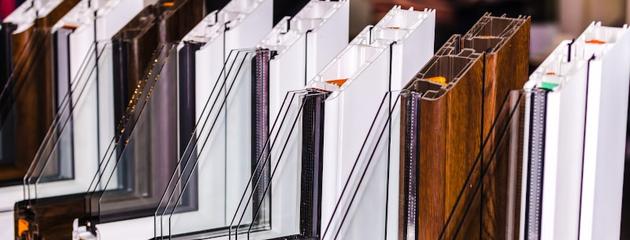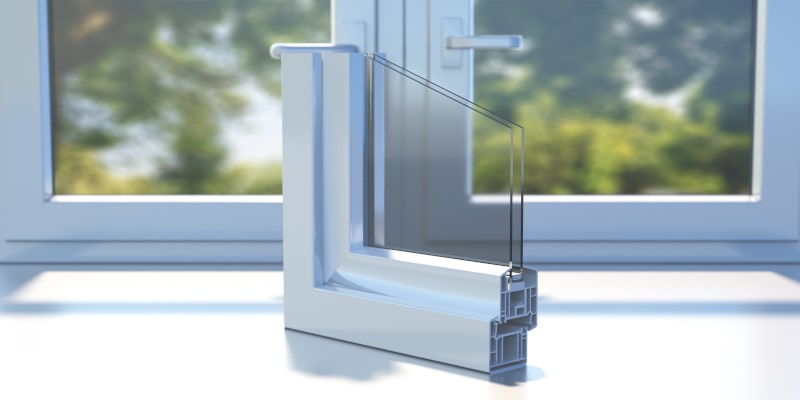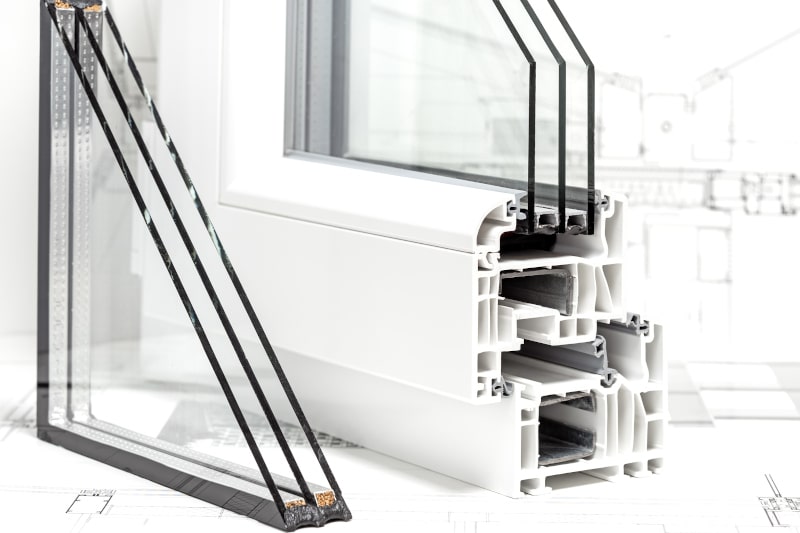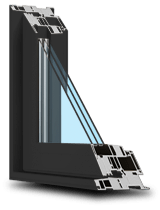Double Pane or Triple Pane Windows?

For homeowners, windows are more than an architectural detail — they are a key component of energy efficiency, comfort, and long-term value. The decision between double-pane and triple-pane windows has a direct impact on heating and cooling costs, noise levels, and the overall comfort of a home.
This guide explains how each window type performs, where each makes sense, and how to calculate the real value of your investment.
Key Takeaways
- Double-pane windows (two glass panes with one insulated gas-filled space) are a cost-effective upgrade from single-pane windows.
- Triple-pane windows (three panes with two gas-filled spaces) provide superior insulation, energy savings, and noise reduction.
- Energy performance is measured by R-value (insulation) and U-value (heat transfer). Triple-pane units generally outperform double-pane ones.
- Cost trade-off: double-pane windows are more affordable upfront; triple-pane windows cost more but can deliver long-term energy savings.
- The right choice depends on factors such as climate, noise exposure, budget, and design priorities.
What Are Double-Pane Windows?

Double-pane (dual-glazed) windows have been the standard for decades. They consist of:
- Two panes of glass separated by one sealed cavity.
- Fill the cavity with gas (argon or krypton) for insulation.
- Low-E coatings are applied to glass to reduce the transfer of UV and infrared heat.
Benefits of Double-Pane Windows
- Better insulation than single-pane: reduces heat loss in winter and heat gain in summer.
- Noise reduction: one cavity helps block outside noise.
- Condensation resistance: less fogging compared to single-pane.
- Lower upfront cost than triple-pane.
- Design versatility: available in vinyl, aluminum, fibreglass, and wood frames.
Drawbacks of Double-Pane Windows
- Moderate energy efficiency: less effective than triple-pane in harsh Canadian climates.
- Noise reduction limited: not ideal for homes near highways or airports.
- Seal failure risk: condensation or fogging can occur if the spacer system degrades.
What Are Triple-Pane Windows?

Triple-pane (triple-glazed) windows add another layer of performance:
- Three panes of glass with two sealed cavities.
- Each cavity is filled with argon or krypton gas.
- Often combined with double Low-E coatings and warm-edge spacers.
Benefits of Triple-Pane Windows
- Superior insulation: R-values typically range from R-6 to R-9, which is double that of a double-pane window.
- Excellent noise reduction: ideal for urban centres or homes near busy streets.
- Consistent indoor comfort: minimizes drafts and temperature swings.
- Potential energy savings: can reduce heating/cooling bills by 10–20%.
- Better condensation resistance due to improved thermal separation.
Drawbacks of Triple-Pane Windows
- Higher initial cost: typically 10–15% more than double-pane.
- Heavier units: require stronger frames and professional installation.
- Slightly reduced light transmittance compared to a double-pane.
- Seal failures are possible (as with all IGUs) if not manufactured/installed correctly.
Double Pane vs. Triple Pane: Direct Comparison
| Feature | Double-Pane | Triple-Pane |
|---|---|---|
| Number of panes | 2 | 3 |
| Insulating cavities | 1 | 2 |
| Gas fill | Argon or krypton | Argon or krypton |
| R-value (insulation) | R-3 to R-5 | R-6 to R-9 |
| Energy efficiency | Good | Superior |
| Noise reduction | Moderate | Excellent |
| Condensation resistance | Good | Excellent |
| Weight | Lighter | Heavier |
| Cost | Lower upfront | Higher upfront, better ROI |
“We often recommend triple-pane windows in cold-climate provinces. Their added insulation pays off within a few winters, especially in energy-intensive homes,” says Tony Wong, Project Manager at Canadian Choice Windows & Doors™ .
Energy Efficiency and Performance
R-Value and U-Value
- R-value measures a window’s resistance to heat flow — higher = better insulation.
- U-value measures the rate of heat transfer — lower = less heat loss.
- Double-pane window: Typically R-3 to R-5, U ≈ 0.30–0.35 — adequate insulation for moderate climates.
- Triple-pane windows: Typically R-6 to R-9, U ≈ 0.15–0.25 — superior insulation, improved comfort, and energy savings in harsh climates.
Canadian Climate Considerations
-
Cold Regions
— Prairies, Northern Ontario, Atlantic Canada
- Long, cold winters and high heating loads.
- Triple-pane windows are highly recommended for enhanced comfort, improved energy efficiency, and reduced condensation.
-
Milder Regions
— BC Coast, Southern Ontario
- Milder winters and lower heating demand.
- A high-performance double-pane window with low-e coatings and a gas fill may be sufficient.
“The right choice isn’t one-size-fits-all. We match window performance to each home’s location, exposure, and energy goals,” explains Helen Sin, Consumer Success Manager at Canadian Choice Windows & Doors™ .
Installation and Maintenance
Installation
- Both types require professional installation to ensure airtight seals.
- Triple-pane units weigh more; therefore, frames and hardware must be engineered to handle the additional load.
- Proper flashing, insulation, and sealing are critical for performance.
Maintenance
- Cleaning: same for both types (glass, tracks, frames).
- Seal checks: look for condensation/fogging.
- Triple-pane: slightly more complex IGUs → replacement can cost more if seals fail.
Choosing Between Double and Triple Pane
| Factor | Double-Pane Windows | Triple-Pane Windows |
|---|---|---|
| Climate Zone | Suitable for mild to moderate Canadian climates (e.g., those in the prairies). | Ideal for harsh winter regions (e.g., ). |
| Energy Bills | Offers sound insulation, reducing heating/cooling costs compared to single-pane. | Provides maximum thermal efficiency, lowering energy use in cold climates. |
| Noise Exposure | Moderate sound reduction; sufficient for quieter suburban or rural areas. | Superior noise control — effective for homes near highways, airports, or busy urban streets. |
| Budget | More cost-effective upfront; strong ROI in mild climates. | Higher initial cost, but can pay off long-term through lower bills and rebates. |
| Design Options | Available in vinyl, aluminum, fibreglass, and wood frames; lighter weight. | Also available in all primary frame materials; heavier construction for added durability. |
Conclusion
Both double-pane and triple-pane windows represent a significant improvement over outdated single-pane units. Double-pane windows are a cost-effective, versatile, and efficient option. In contrast, triple-pane windows deliver top-tier performance, insulation, and noise reduction, making them ideal for Canadian climates where energy costs and comfort are crucial.
At Canadian Choice Windows & Doors, we help homeowners determine which option best suits their budget, climate, and comfort goals. Book a free consultation to explore the best-performing windows for your home.
FAQ Section
Q1: Are triple-pane windows worth the extra cost in Canada?
Yes. While triple-pane windows cost more upfront, they provide superior insulation, noise reduction, and long-term energy savings. In cold Canadian climates, they often pay for themselves within 5–10 years through reduced heating bills.
Q2: What is the R-value difference between double-pane and triple-pane windows?
Double-pane windows typically have an R-value of R-3 to R-5, while triple-pane windows achieve R-6 to R-9. A higher R-value means better insulation and improved comfort.
Q3: Do triple-pane windows reduce outside noise better than double-pane?
Yes. With an extra pane of glass and an additional gas-filled cavity, triple-pane windows provide excellent noise reduction — ideal for homes near busy streets, airports, or urban areas.
Q4: Can I install double-pane windows instead of triple-pane in a cold climate?
Yes, but triple-pane is recommended in harsh climates like the Prairies or Northern Ontario. Double-pane windows may still be acceptable in milder regions if they have Low-E coatings and argon gas fills.
Q5: How long do double-pane and triple-pane windows last?
Both types can last 20–30 years with proper installation and maintenance. Triple-pane units are more complex and may require professional servicing if a seal fails.
1000’s of Colours & Textured Finishes
Transform your home from ordinary to extraordinary with our new coloured and non-glare textured finishes. Available in a wide array of colours as well as custom matched colours for your very own personalized design.
Our Most Popular Replacement Window Colours:










